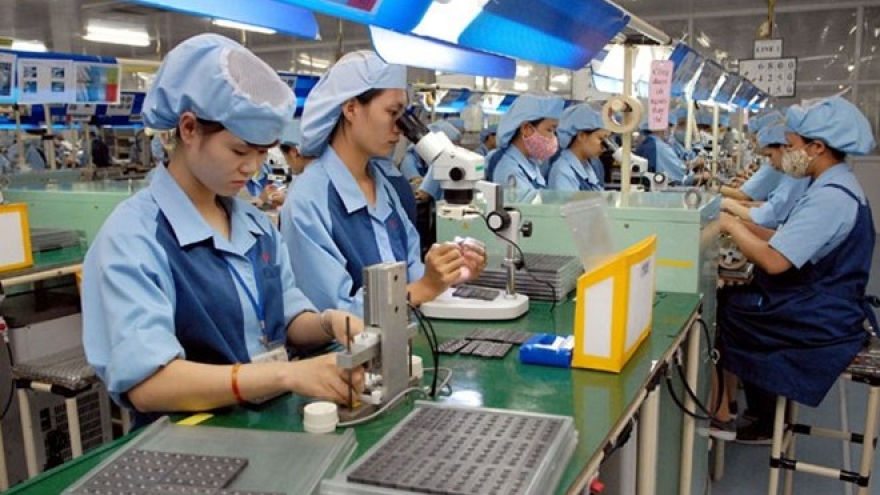Vietnam’s labour productivity increases in 5 years
The average labour productivity in Vietnam increased from US$1,700 per laborer in 2006 to US$2,672 in 2017, according to the Vietnam Institute for Economic and Policy Research (VEPR).
 |
| Delegates at a meeting on labour productivity held in Hanoi on May 8 |
Assoc. Prof. Dr. Vu Minh Khuong, a lecturer at the Lee Kuan Yew School of Public Policy, National University of Singapore, said the decline in labor productivity was the cause of the slowdown in Vietnam's GDP growth from 2005 to 2013 with the productivity of agriculture, forestry and fishery recorded the lowest growth while the manufacturing industry maintain a modest rate.
“Vietnam’s productivity in all sectors is not higher than in any other ASEAN countries, even in some sectors it is lower than that of Cambodia,” said Assoc. Prof. Dr. Nguyen Duc Thanh, VEPR Director said.
Vietnam’s labor productivity in 2015 was the lowest, ranking behind Cambodia in the three most important sectors of the economy, including manufacturing, construction and transportation, and warehousing.
For agriculture, electricity, water, gas, wholesale, retail and repair, Vietnam's labor productivity was ranked second lowest among ASEAN member countries, only higher than Cambodia.
In contrast, Vietnam has higher labor productivity than some countries in three sectors, including mining, finance, real estate and office services.
According to Assoc. Prof. Dr. Vu Minh Khuong, besides output, internal productivity factor is very important. The indicators are high in some industries such as pig breeding, food production, and industrial crops. However, the value is lower than quantity.
Assoc. Prof. Dr. Nguyen Duc Thanh emphasized a current issue that wages are rising faster than productivity which will gradually affect profits of the businesses.
Economist Pham Chi Lan said wages must be based on labor productivity. Therefore, the most basic thing is to solve the problem of labor productivity, especially in the public sector where labor productivity is not high but the labor force is large.


